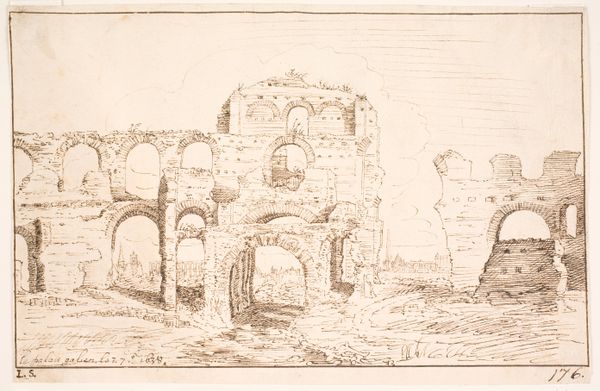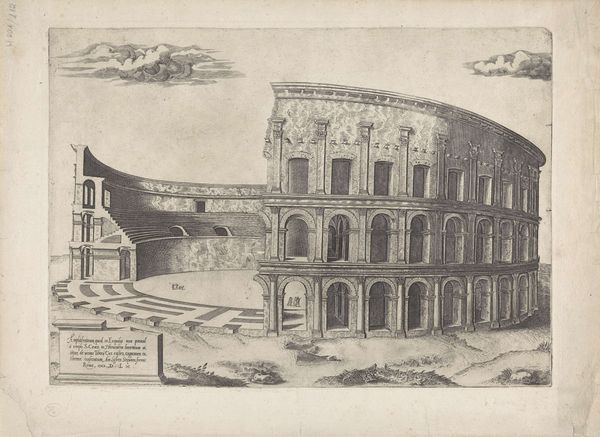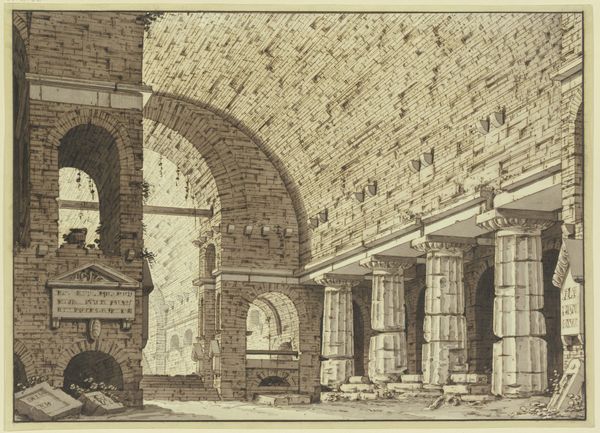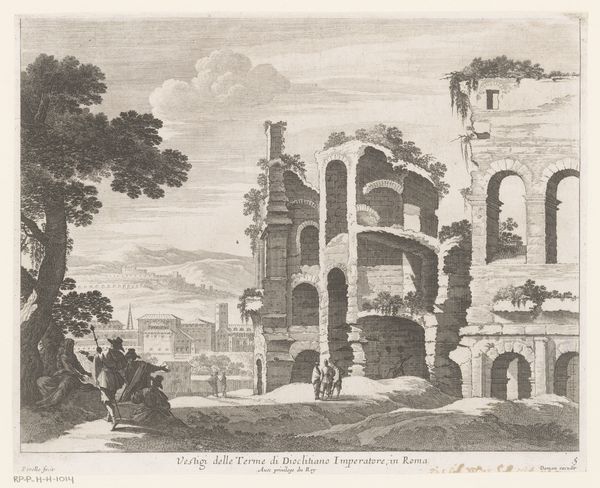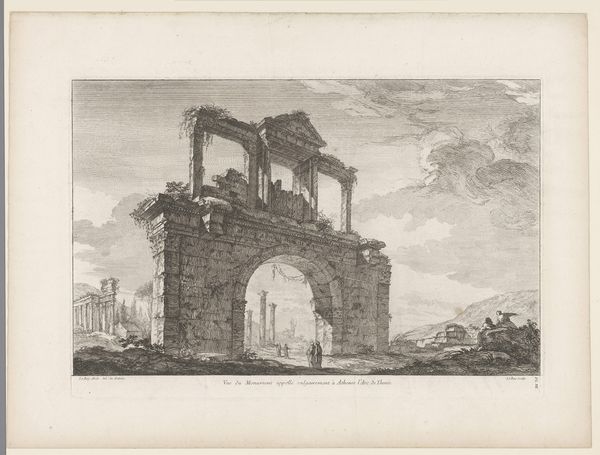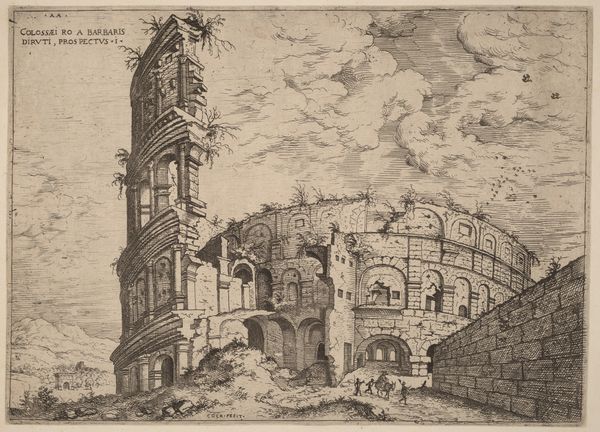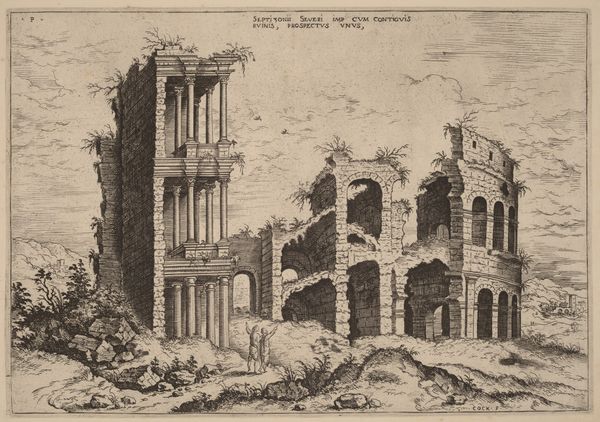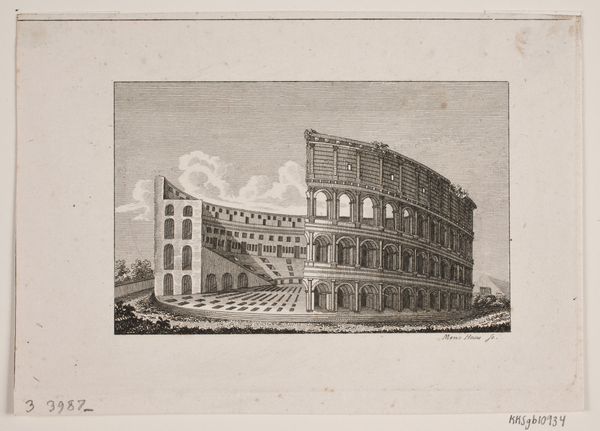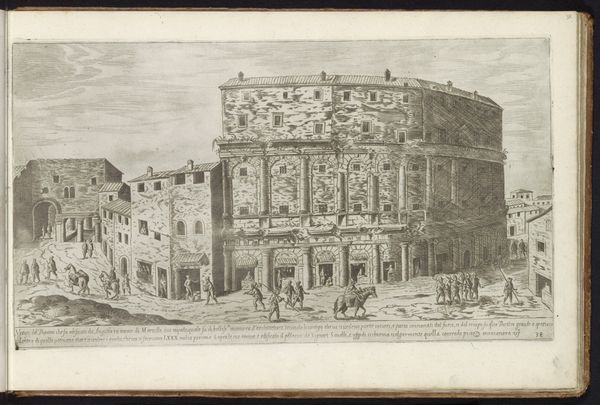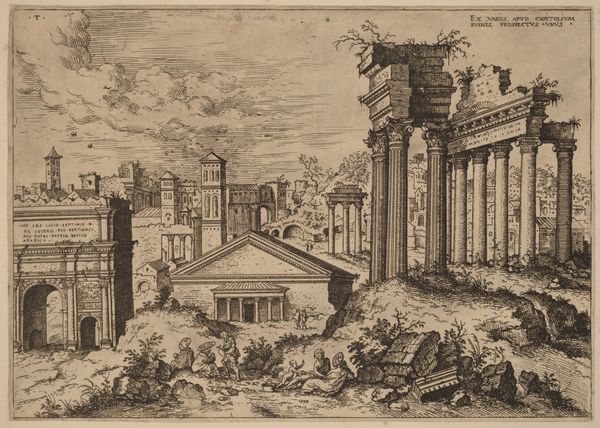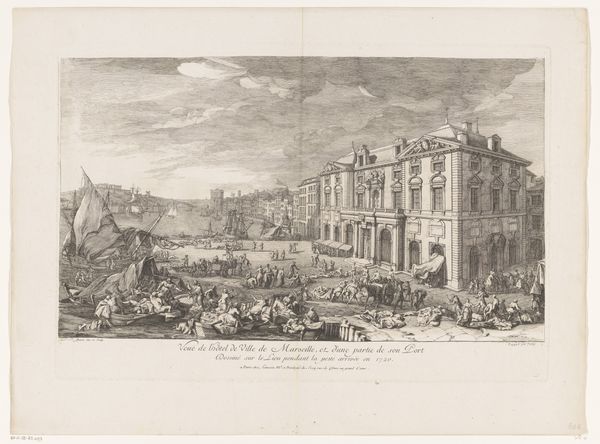
drawing, pencil
#
pencil drawn
#
drawing
#
neoclacissism
#
pencil sketch
#
landscape
#
coloured pencil
#
ancient-mediterranean
#
pencil
#
cityscape
#
watercolor
Dimensions: height 495 mm, width 704 mm
Copyright: Rijks Museum: Open Domain
Curator: Hendrik Voogd's rendering of "The Colosseum in Rome," dating back to 1797, offers a striking cityscape. Editor: Well, right away, there's this feeling of… noble decay, isn't it? The Colosseum, in faded pencil, seems less like a monument to power and more like a testament to the relentless passage of time and how that affects every construction, social as it is architectural. Curator: Exactly. Voogd really captures the romanticism of ruins, doesn't he? It's all rendered in delicate pencil and watercolor washes, now residing in the Rijksmuseum. I see those material choices enhancing this idea of ephemerality – as pencil sketch or light was color wash, it would decay overtime... Editor: Right, but I am curious about the Neoclassical frame. Those folks, lounging by the structure -what were the labour relationships behind this coliseum, and what did their "leisure" entail for the rest of Rome? Voogd seems unconcerned about the people it must have displaced. Curator: True, Voogd likely found aesthetic interest in the structure itself more than dwelling on what, in 1797, were already ancient issues around the Roman political economy. But those details also add life and scale to this work, setting off the immensity of the Colosseum. It almost suggests that humans continue to be enthralled by structures even while labor relationships behind those very structures change... Editor: Well said! Curator: Ultimately, looking at this piece I think you get a tangible sense of history-- the layers of stories embedded in those stones. Even just considering Voogd himself standing there sketching… That is another layer. It all sort of collapses the past into the present. Editor: For me, this Colosseum emerges as a stark lesson: empires crumble and stone returns to dust – no matter how precise the neoclassical rendering. A sobering perspective after all.
Comments
rijksmuseum about 2 years ago
⋮
In 1788, two years after Daniël Dupré, Hendrik Voogd also received a grant from the ‘Economic Branch’ of the Dutch Society of Sciences in Haarlem, enabling him to work for some time in Italy, where he wound up living until his death. Voogd only rarely made monumental drawings intended as independent works of art, such as this one
Join the conversation
Join millions of artists and users on Artera today and experience the ultimate creative platform.

